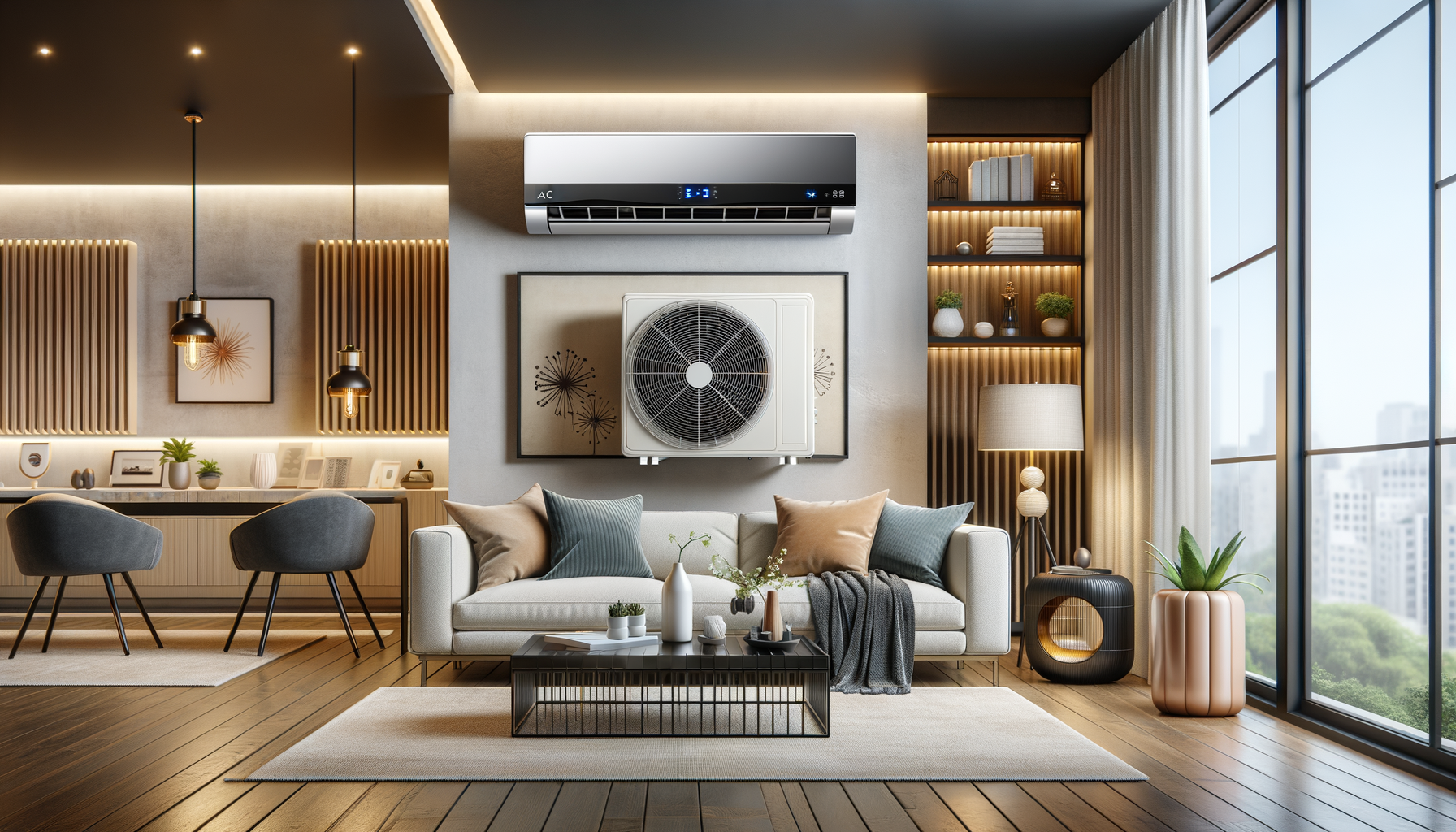Introduction to AC Mini Splits
AC mini splits are an innovative solution for those seeking efficient and customizable climate control in their homes or offices. Unlike traditional HVAC systems, mini splits do not require ductwork, making them an excellent choice for older buildings or spaces where installing ducts is impractical. These systems provide targeted temperature control, allowing users to set different temperatures for individual rooms or zones, enhancing comfort and energy efficiency.
The relevance of AC mini splits has grown significantly as more people prioritize energy savings and personalized comfort. As energy costs rise and environmental concerns increase, the ability to control the climate in specific areas of a home or workplace without wasting energy on unused spaces is highly desirable. This article explores the various aspects of AC mini splits, offering insights into their benefits, installation, and potential drawbacks.
How AC Mini Splits Work
AC mini splits operate by utilizing a split-system design, which consists of an outdoor unit and one or more indoor units. The outdoor unit houses the compressor and condenser, while the indoor units, often mounted on walls, contain the air handler. These components are connected by refrigerant lines and electrical wiring, allowing the system to transfer heat between the indoor and outdoor environments efficiently.
One of the standout features of mini splits is their ability to provide both heating and cooling, making them versatile for year-round use. The system works by extracting heat from the outside air and transferring it indoors during the winter, and reversing the process to remove heat from the indoor air during the summer. This dual functionality is achieved through the use of a reversing valve, which allows the system to switch between heating and cooling modes seamlessly.
Additionally, mini splits are equipped with advanced inverter technology, which adjusts the compressor speed based on the cooling or heating demand. This results in more precise temperature control and reduced energy consumption, as the system only uses the necessary amount of power to maintain the desired climate.
Benefits of Using AC Mini Splits
The benefits of AC mini splits are numerous, making them a popular choice for many homeowners and businesses. One of the primary advantages is their energy efficiency. By eliminating the need for ductwork, mini splits reduce the energy losses associated with duct systems, which can account for up to 30% of energy consumption in traditional HVAC systems.
Another significant benefit is the enhanced comfort and control they offer. With the ability to set different temperatures for individual rooms or zones, occupants can tailor the climate to their preferences, ensuring optimal comfort in every part of the building. This is particularly useful in homes with varying occupancy levels or in commercial spaces with diverse usage requirements.
Mini splits also contribute to improved indoor air quality. Since they do not rely on ducts, there is less opportunity for dust, allergens, and other pollutants to circulate throughout the building. Many systems come with built-in air purifiers and dehumidifiers, further enhancing the quality of the indoor environment.
- Energy efficiency and cost savings
- Customized climate control
- Improved indoor air quality
Considerations and Installation of AC Mini Splits
While AC mini splits offer numerous advantages, there are some considerations to keep in mind when deciding whether they are the right choice for your space. One potential drawback is the initial cost, which can be higher than that of traditional HVAC systems. However, the long-term energy savings and reduced maintenance costs often offset this initial investment.
Installation of mini splits is relatively straightforward compared to ducted systems, but it still requires professional expertise to ensure optimal performance and efficiency. The placement of indoor units is crucial for effective air distribution, and the outdoor unit must be positioned to allow for proper airflow and heat exchange.
It’s also important to consider the aesthetic impact of mini splits, as the indoor units are typically mounted on walls and may not blend seamlessly with all interior designs. However, many manufacturers offer sleek and modern designs to complement various decor styles.
Conclusion: Is an AC Mini Split Right for You?
AC mini splits are an excellent option for those seeking efficient, flexible, and personalized climate control without the need for extensive ductwork. They offer significant energy savings, improved indoor air quality, and the convenience of tailored temperature settings for individual zones. However, the initial cost and aesthetic considerations should be weighed against these benefits.
For homeowners and businesses looking to upgrade their climate control systems, AC mini splits provide a compelling combination of technology and comfort. As energy efficiency and environmental responsibility become increasingly important, these systems represent a forward-thinking solution that aligns with modern living and working environments.
Ultimately, the decision to install an AC mini split should be based on your specific needs, budget, and space considerations. Consulting with a professional can provide valuable insights and help determine the best approach for achieving the ideal indoor climate.




Leave a Reply